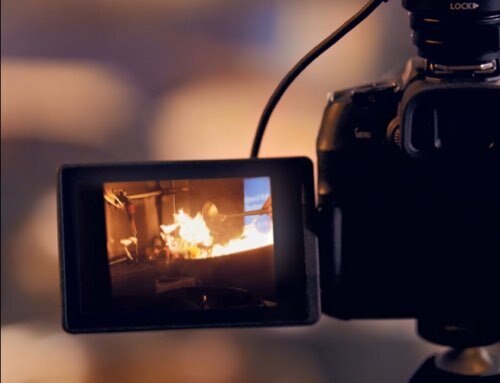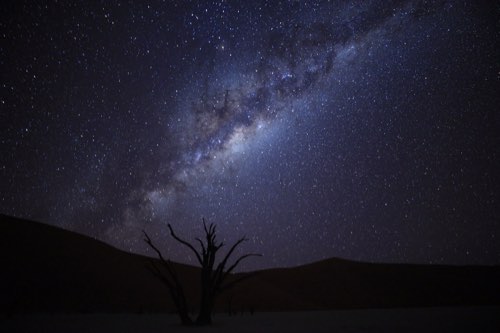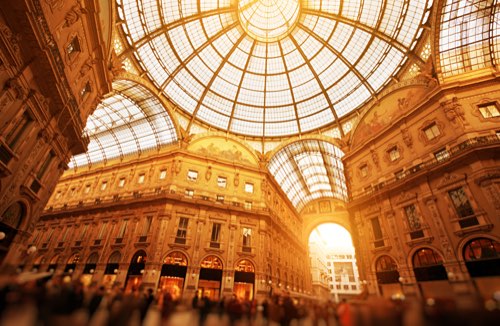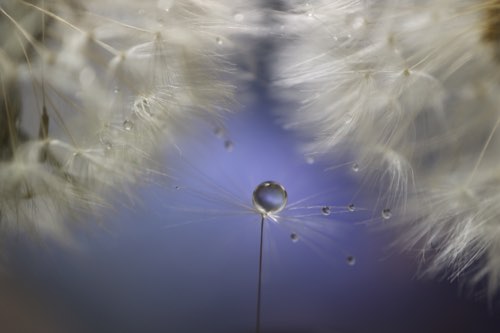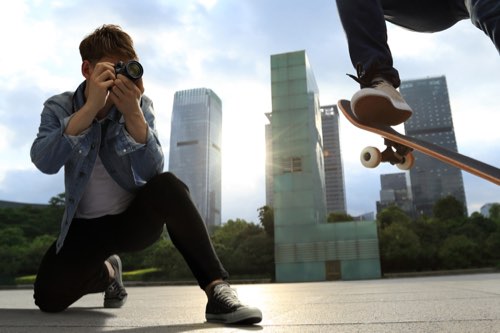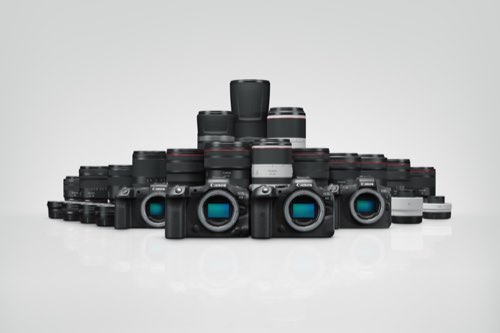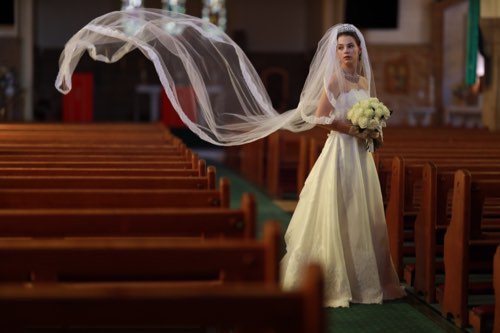Lens Basics #9: Large Aperture Lenses
Large aperture lenses refer to lenses with a low maximum f-number, such as f/1.2 or f/1.8. They are good for shooting in low light, and make it possible to achieve a creamy background blur (bokeh) effect. Read on to learn more about them—we also shared some recommendations!
EOS R + RF85mm f/1.2L IS USM @ 85mm, f/1.2, 1/40 sec, ISO 100
Characteristics of large aperture lenses
Characteristics of large aperture lenses
- Beautiful shallow focus (background bokeh) effects.
- You can use a faster shutter speed in low light.
- Better autofocusing performance in low light.
- When shooting at or near the maximum aperture, you’ll need to make extra effort to ensure everything is in focus because of the smaller depth of field.
What are large aperture lenses?
What are large aperture lenses?
- Lenses with a small f-number (f/2.8 or smaller).
- Also known as “fast” or “bright” lens.
“Aperture” here refers to the aperture diaphragm: the opening in the lens that allows light to enter. “Large aperture lenses” are lenses that have a wide/large maximum aperture. In other words, the f-number in the lens name is small: f/2.8 or lower.
Why are large aperture lenses also called “bright” or “fast” lenses?
You’ve probably heard people describing a lens as “bright” or “fast”. These are other names for large aperture lenses. The reason why goes back to the concept of exposure and the exposure triangle.
Large aperture lenses are “bright” because a wider aperture allows more light to pass through the lens. At the same shutter speed and ISO speed settings, a wider aperture setting (smaller f-stop setting) results in a brighter image.
Large aperture lenses are also “fast” because with more light entering the lens (and reaching the image sensor), you can achieve the same image brightness with a faster shutter speed. This makes it easier to freeze fast-moving action in dim lighting conditions. It also prevents camera shake during handheld shooting, especially when using a telephoto lens where blurring becomes more prominent.
EOS R3/ RF135mm f/1.8L IS USM/ Manual exposure (f/1.8, 1/1600 sec, ISO 3200)
A large aperture lens makes it possible to freeze blink-and-you-miss-it moments even in dark places.
Know this: Autofocus performance is better on large aperture lenses
Here’s another strength of large aperture lenses that many people don’t know: they help autofocus performance in low light, at least on Canon cameras! That’s because the camera usually looks for focusing subjects at the maximum aperture (full-aperture metering). More light reaching the sensor means more useful information for the Dual Pixel CMOS AF system.
Also see:
Lens FAQ #2: Can A Fast Lens Really Make It Easier To See Through The Viewfinder?
Camera FAQ: How Does the Low-Light AF Limit Impact My Shots?
Large aperture lenses create better bokeh (out of focus blur)
EOS R6/ RF85mm f/2 Macro IS STM/ Aperture-priority AE (f/2, 1/250 sec, EV +1)/ ISO 400
The larger the maximum aperture, the easier it is to obtain a creamy background blur (background bokeh) effect that makes your subject stand out.
However, at small f-stop settings, it can be more difficult to establish precise focus because of the shallow depth of field. You might need to magnify the display to see better and/or use manual focusing. (Also see: Focus Guide & MF Peaking: Making Manual Focus Easier)
Examples of Canon's large aperture lenses
Examples of Canon's large aperture lenses
As you can see, large aperture lenses expand possibilities in many different situations. That’s why many photographers and filmmakers would pick them over other options! They are good to have regardless of what you shoot, but these genres will reap more benefits:
- Street photography: Low light and moments
- Portrait and product photography: Background bokeh
The lenses with the largest maximum apertures tend to be prime lenses simply because they are easier to design. Here are the focal lengths we recommend for each of the genres. Remember to factor in the 1.6x crop factor if you are using an APS-C camera like the EOS R10 or EOS R50!
Recommended prime lenses for street photography
These compact, lightweight prime lenses in classic street photography focal lengths will help you freeze unexpected moments even when shooting at night! The ones with “Macro” in the name are also good for close-up shots.
From left:
- RF16mm f/2.8 STM (makes a good fast 25.5mm equivalent lens on an APS-C camera)
- RF28mm f/2.8 STM
- RF24mm f/1.8 Macro IS STM
- RF35mm f/1.8 Macro IS STM
- RF35mm f/1.4L VCM
- RF50mm f/1.8 STM (“Nifty Fifty”)
Recommended prime lenses for portrait photography
For portraits and product photography, you’ll often want more background bokeh to make the subject stand out better. Use a longer focal length for more intense blurring. (See: Lens Basics #3: Creating Bokeh). For most purposes, an ultra-wide-angle lens isn’t ideal because of the perspective distortion, though they can be used for creative reasons.
Back row (from left)
- RF35mm f/1.4L VCM
- RF50mm f/1.2L USM
- RF85mm f/1.2L USM
- RF135mm f/1.8L IS USM
Front row (from left)
- RF35mm f/1.8 Macro IS STM
- RF50mm f/1.8 STM
- RF85mm f/2 Macro IS STM
The lenses with the red ring are professional-grade lenses: they have a dust- and moisture-resistant design and better optical quality.
Pro tip: Longer focal length, blurrier background
A longer focal length blurs out the background more, so for the best possible bokeh, try a medium telephoto lens like the RF85mm f/1.2L USM and RF135mm f/1.8L IS USM especially when you have more space to work in.
Wide-angle lenses intrinsically have a larger depth of field, so the background won’t be as blurred compared to a longer lens at the same aperture. If you want a beautiful blurred background while shooting wider, choose the largest aperture lens possible.
Recommended large aperture zoom lenses
Sometimes, a zoom lens is more convenient. These are some of Canon’s most popular large aperture zoom lenses. Unlike most kit lenses, they are all constant aperture zoom lenses so the maximum aperture stays at f/2.8 even when you zoom in.
From left:
- RF24-105mm f/2.8L IS USM Z
- RF24-70mm f/2.8L IS USM
- RF28-70mm f/2L USM
- RF15-35mm f/2.8L IS USM
- RF70-200mm f/2.8L IS USM
Know this: The holy trinity of lenses
The “holy trinity of lenses” refers to a set of three fast, professional-grade wide-angle, standard, and telephoto zoom lenses. If you want maximum versatility with fewer lenses, aim to own them. You can do a lot with their wide maximum apertures and combined focal range.
The traditional holy trinity consists of the 15-35mm (wide-angle), 24-70mm (standard), and 70-200mm (telephoto). However, Canon has two more fast standard zoom lens options: the RF28-70mm f/2L USM and RF24-105mm f/2.8L IS USM Z. Choose the one that best fits your needs!
Techniques for making the most of your large aperture lens
Large aperture lens technique: Create pretty bokeh circles
A lens’ maximum aperture affects the size of the bokeh circles you can create when there are tiny point light sources or reflected light behind your main subject. A smaller f-number (wider aperture setting) gives you larger bokeh circles.
f/2
EOS R6 Mark II/ RF50mm f/1.8 STM/ FL: 50mm/ Flexible-priority AE (f/2, 1/800 sec, EV +0.3)/ ISO 200/ WB: Auto
f/5.6
EOS R6 Mark II/ RF50mm f/1.8 STM/ FL: 50mm/ Flexible-priority AE (f/5.6, 1/800 sec, EV +0.3)/ ISO 1600/ WB: Auto
Large aperture lenses work the best in these scenes!
Large aperture lens work best in these scenes!
When you want to isolate a main subject
EOS R5/ RF35mm f/1.4L VCM/ FL: 35mm/ Manual exposure (f/1.4, 1/50 sec, ISO 100)
Make your main subject stand out better in a busy scene by using a large aperture lens to blur out other objects in the background and foreground. You might find yourself using this technique very often when photographing food, objects around you, or even portraits!
Pro tip: Not comfortable with manual exposure mode? Use Av mode
Aperture-priority AE (Av) mode is a semi-automatic exposure mode. You have the freedom to choose the f-stop; the camera selects the best shutter speed and ISO speed settings so that the scene is correctly exposed.
When you want to achieve sharper handheld shots or freeze action at night
f/5, 1/5 sec, ISO 3200: Motion blur
f/1.8, 1/30 sec, ISO 3200: Sharper shot
A large aperture lens lets us achieve the same exposure with a faster shutter speed, making it possible to freeze the moving boat and achieve a sharp image.








